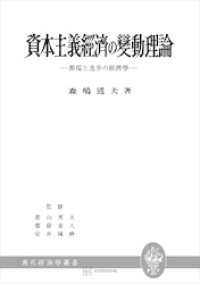Full Description
Football is probably the most widespread sport in the world. Like many other sports football has undergone major changes. It has increased in intensity, speed, and other factors contributing to increased risks of traumatic injury. Footballers, trainers, and the sport's medical staff are asking for greater information on the traumatic lesions associated with football. The primary role of those concerned with the health of footballers is to enforce preventive measures to reduce the risks of trauma.
Contents
General Concepts.- Epidemiology and Risk Factor.- Aspects of Biomechanics.- Training Methods.- Evaluation of Whole Physical Condition.- Biochemical and Haematological Parameters in Football Players.- Prevention of Football Injuries.- Organisation of a Professional Team's Medical Staff and the Physician's Role.- Injuries in Women's Football.- Referee Lesions.- Future Treatments for Football Injuries.- Specific Injuries.- Maxillo-Facial Traumatology.- Upper Extremity Injuries.- Shoulder Dislocation.- Back Problems.- Muscle Strains.- Tendon Injuries.- Groin Pain.- Meniscal Lesions.- Anterior Cruciate Ligament Injuries.- Anteromedial Knee Instability.- Medial-Side Injury of the Knee.- Posterior Cruciate Ligament Injuries.- Articular Cartilage Lesions in Football Players.- Patellofemoral Problems.- Footballer's Arthritic Knee.- Leg Fractures.- Malleolar Fractures.- Ankle Ligaments Injuries.- Osteochondral Ankle Defects.- Chronic Footballer's Ankle.- Foot Problems.- Stress Fractures.- Rehabilitation after Football Injuries.- Return to Play.- Protective Equipment.
-

- 電子書籍
- 資本主義経済の変動理論(現代経済学叢書…
-

- 電子書籍
- 先輩の恋人はクズだから俺に抱かれてくだ…
-

- 電子書籍
- 世界は半分になった(2) ビッグコミッ…
-

- 電子書籍
- ループ7回目の悪役令嬢は、元敵国で自由…




